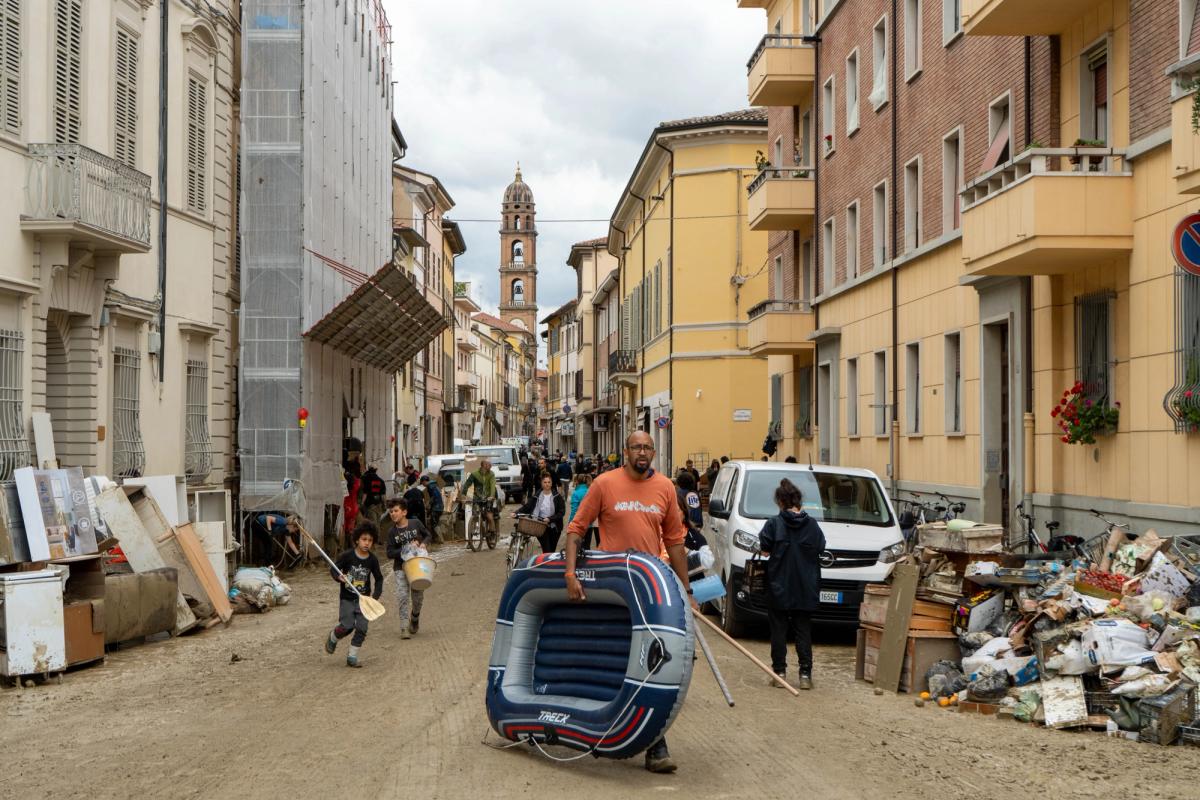A true apocalypse of slime, death, homelessness and billions of euros' worth of damage: this is the situation in the Emilia-Romagna region of Italy, which is facing its worst flooding in a century. At least 13 people have died so far and more than 10,000 have been displaced.
Currently, 42 municipalities in the region are affected by the flooding. Twenty-three rivers and streams have been flooded and large sections of the A14 motorway between Faenza and Forlì are under water, as are towns and cities including Cesena, Bagnacavallo, Savignano sul Rubicone, Santarcangelo di Romagna, Lugo and Ravenna. In the coastal cities of Rimini and Riccione the lidos that were ready for the start of the summer season have been completely devastated.
For now, it is difficult to ascertain the damage to historical monuments. In Forlì, where homes and shops have been destroyed, the exhibition The Art of Fashion at the San Domenico Museums has been closed for three days, although the venue avoided any damage from the floods and heavy rain. All the museums in Faenza have been closed, including the Museum of Ceramics and Palazzo Milzetti.
Elena Rossoni, the director of the Palazzo Milzetti, says the museum was “barely touched” by the water that reached Faenza’s historic centre. “We are monitoring the situation, but the water did not quite reach the museum,” she says. In Faenza, the heavy rain at the beginning of May had already caused extensive damage to the historic Bottega d'arte ceramica Gatti.
The situation is also very serious in Ravenna, where the Classis archaeological museum has become an emergency shelter for evacuees. “The night between Wednesday and Thursday went well,” says Francesca Masi, the new director of the RavennAntica Foundation. “Seeing our museum full of people, around 800, with at least 150 of their dogs, and being able to welcome everyone into the beauty of our heritage was very moving. Many of the citizens who were able to return to their homes this morning promised to come back here to visit,” she says. When the Classis museum ran out of beds to accommodate more evacuees, sun loungers arrived from the coastal bathing establishments nearby.
In Bologna, a river of water was running along Via dell'Archiginnasio in front of the historic library and Palazzo Re Enzo yesterday.
The Museo d'Arte Moderna di Bologna was closed on 17 and 18 May but due to reopen today. “This was decided by the head of the municipality's culture department to allow restoration activities after the emergency situations that had arisen in various parts of the city. Many employees worked from home,” says its director.
Also in Bologna, the Genus Bononiae museums remained open but events were cancelled, including a presentation of a newly acquired painting, Ludovico Carracci's Holy Family with Saints John, Ursula and Matthias, which was planned for 18 May at the Pinacoteca Nazionale di Bologna. Also in the capital, libraries and some roads along the hills were closed due to the risk of landslides.
At the time of writing, more than 3,100 people had found shelter at locations set up by the various municipalities affected: 2,500 in the Ravenna area, 420 in Bologna, 200 in Forlì-Cesena and seven in the Rimini area. A red alert has been issued for the plains and hills of Bologna as well as the low hills, plains and coast of Romagna. An orange alert is in force in the Romagna mountains, as well as the central Emilia hills and the Modena and Ferrara plains. The Emilia Romagna Region has launched a current account for aid, with the Iban number IT69G0200802435000104428964.


